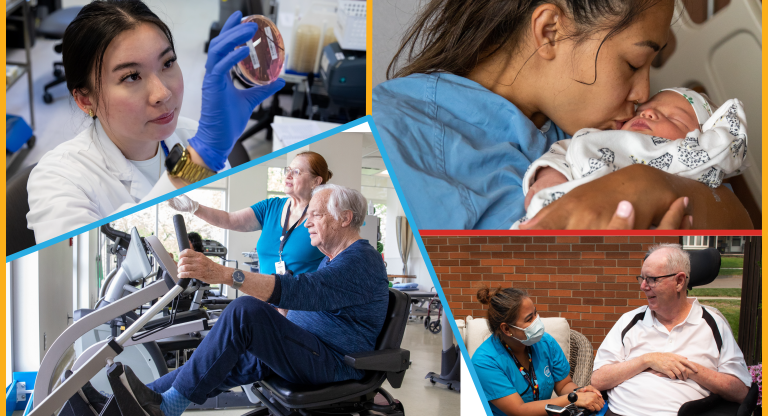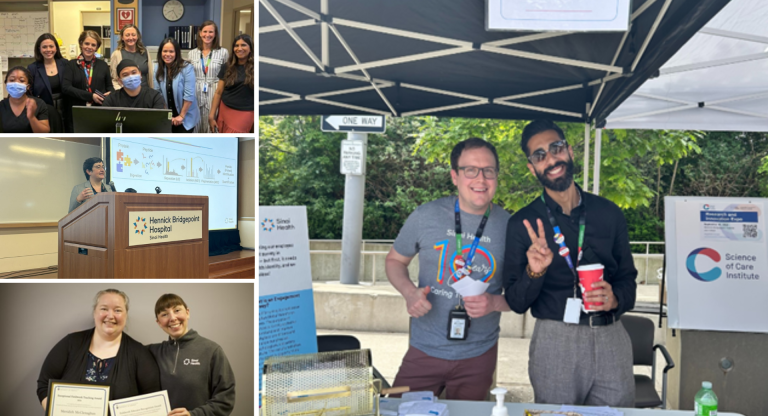How a master neuron controls movement in worms with implications for human disease

Sinai Health researchers have uncovered a fascinating mechanism in the nervous system of the tiny roundworm Caenorhabditis elegans, which could have significant implications for treating human diseases and advancing robotics.
The study, led by Dr. Mei Zhen, Senior Investigator at the Lunenfeld-Tanenbaum Research Institute, part of Sinai Health, and colleagues, reveals the crucial role of a specific neuron, named AVA, in controlling the worm’s ability to shift between forward and backward motion.
The journal Science Advances published their findings.
Crawling towards food sources and swiftly reversing from danger is a matter of life and death for the worms. This type of behaviour, where two actions are mutually exclusive, is common in many animals, including humans. For instance, we cannot sit and run at the same time. Dr. Jun Meng, a former PhD student in Dr. Zhen’s lab who spearheaded the research, said that understanding how animals transition between such opposing motor states is crucial, not only for insights into how animals move but also for neurological disorder research. They study this problem in worms, whose simple see-through bodies provide a unique window into basic neural wiring that underpins animal locomotion.
For a long time, scientists believed that the control of these movements in worms was due to straightforward reciprocal actions between two neurons: AVA and AVB. AVA was thought to promote backward motion while AVB facilitated forward motion, with each neuron inhibiting the other to control movement direction. However, the new data from Dr. Zhen’s team challenge this notion, uncovering a more complex interaction where the AVA neuron plays a dual role.
The AVA neuron not only instantly stops forward motion by inhibiting AVB, but also maintains a longer-term stimulation of AVB to ensure a smooth transition back to forward movement. This discovery highlights the AVA neuron’s ability to finely control movement through distinct mechanisms, depending on different signals and across different time scales.
“In terms of engineering, this is a very economical design,” said Dr. Zhen, who is also a Professor in the Department of Molecular Genetics at the University of Toronto.
“The strong, robust inhibition of the backward circuit allows the animals to respond to bad environments and escape. At the same time, the controller neuron continues to put in constitutive gas into the forward circuit to generate movement towards safer places.”
The discovery that the AVA neuron plays such a dominant role offers a major new insight into the neural circuit that has been studied since the inception of modern genetics over half a century ago. The Zhen laboratory has now successfully leveraged cutting-edge technology to precisely modulate the activity of individual neurons and record data from living worms in motion. Dr. Zhen emphasizes the importance of interdisciplinary collaboration in this research. Key experiments were performed by Dr. Meng, while neuronal electrical recordings were conducted by Bin Yu, a PhD student in Dr. Shangbang Gao’s lab, at Huazhong University of Science and Technology in China. Dr. Tosif Ahamed, a former postdoctoral fellow in the Zhen lab and now a Theory Fellow at the HHMI Janelia Research Campus in the US, led the mathematical modelling efforts that were crucial for testing hypotheses and gaining these new insights.
The findings provide a simplified model to study how neurons can manage multiple roles in movement control—a concept that might extend to human neurological conditions. For example, AVA’s dual role depends on its electric potential which is regulated by ion channels on its surface. Dr. Zhen is already exploring how similar mechanisms could be involved in a rare condition known as CLIFAHDD syndrome, caused by mutations in similar ion channels. Additionally, the insights gained could inform the development of more adaptable and efficient robotic systems capable of complex movements, as highlighted by Dr. Meng.
“From the origin of modern science to the forefront of today’s research, model organisms like C. elegans have been instrumental in peeling back the layers of complexity in our biological systems, said Dr. Anne-Claude Gingras, Director of the Lunenfeld-Tanenbaum Research Institute and Vice President of Research at Sinai Health. “This research is a great example of how much we can learn from simple animals and think about applying this new knowledge to advancing medicine and technology.”
This work was supported by the Canadian Institute of Health Research, the Natural Sciences and Engineering Research Council of Canada, the National Natural Science Foundation of China and the European Research Council.












